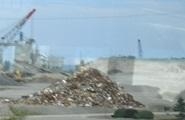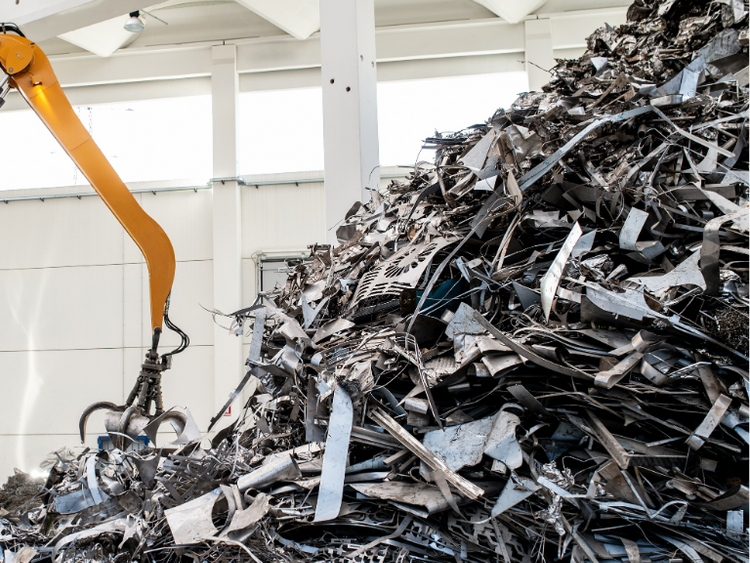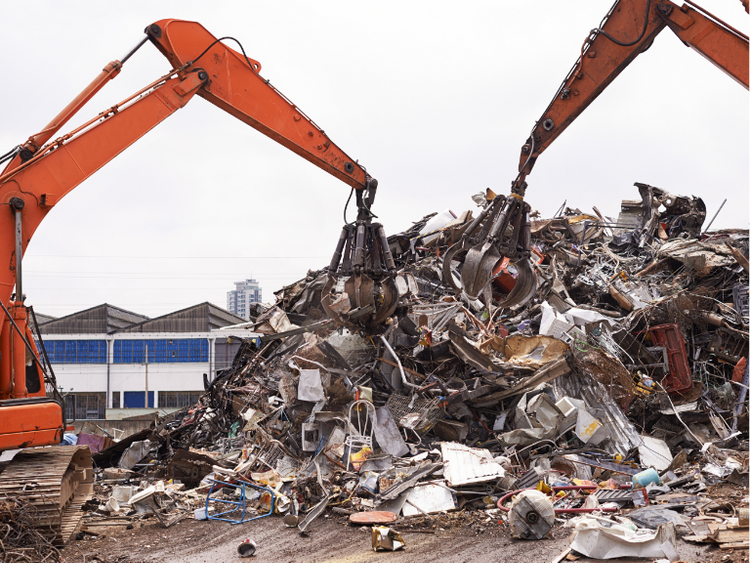Scrap Prices North America

Ferrous Scrap Prices Rise in April, to Decline in May?
Written by Tim Triplett
April 8, 2018
Steel Market Update’s sources report that ferrous scrap prices have increased by $5 to $15 per gross ton in April, depending on the type and region. Some predict scrap prices are likely to decline in May.
Strong domestic demand is the key driver of rising scrap prices, said one dealer in the North. “With few exceptions, mills from Indiana to the Atlantic all raised prices for shred and cuts by $15 per gross ton. Prime scrap traded up $5 to $10. Shred, bundles, plate and bush are all trading in the $385 to $400 range,” he said.
“In some respects, the April ferrous trade was typical of an April trade. In other respects, it was a demonstration of the continued leverage that the mills have over dealers when it comes to buying scrap (and the reason scrap to finished steel spreads are so wide currently),” said another dealer in the Northeast.
April prices typically roll over at levels that are not much different from March, he explained. Mills know that by the time they begin to receive April scrap, flows into dealer yards will be better, and the dealers will be more inclined to sell production as prices likely won’t improve again for several months. So, they don’t need to overbuy, even heading into their busy production season. And dealers, expecting flows to improve, are inclined to sell a little more than their expected production for the month.
The market entered this April buy period with expectations of a $20 per gross ton increase over March due to strong domestic demand and transportation logjams. Initially, mills paid that increase, but the largest mill buyer (DJJ/Nucor) chose to sit out the buy period until late in the week. That, combined with a considerably weaker export market both in Turkey and Asia, pressured the market so that it settled only $10 to $15 higher than last month, with prices for the last sales of the week basically sinking even further to around the same level as in March.
The Southeast was the country’s strongest region due to the need for Big River Steel to buy scrap. Overall, shred prices ranged from $380 in the Northeast and Chicago to $390+ in the Ohio Valley area and even a little higher in the deep South. Prime prices remained at a slight premium to shred in the Midwest, settling at around $385 to $400 per ton, with slightly higher prices in the South, the dealer said.
Scrap expert John Harris of Aaristic, Inc., concurred that price negotiations for April in the U.S. moved higher. Price increases on bush rose +$10, shred +$15 and #1HMS +$10, moving the March RMDAS prices up to bush $402/GT, shred $384/GT and #1HMS $358/GT for U.S. average prices, he said.
Winter weather was a factor. Inclement weather systems flooded major commercial arteries, hit coastal areas with late winter storms and generally delayed the spring scrap flows into the yards. “Someone needs to close the groundhog hole as his message this year was bogus,” said Harris.
He pointed to other key factors in the April negotiations:
• There was a reduced volume of exported scrap as U.S. prices were higher than FOB export prices.
• Transportation systems including barge, trucking and rail all have serious delivery issues.
• The nine-week rise in mill utilization rates from the start of January at 70.7 percent to early March at 78.7 percent added another 250,000 gross tons of scrap to demand.
• And the hype over Section 232 and scrap sellers’ concerns that price gaps between scrap and HRC are out of whack added to the negotiation pressure.
Harris expects a “downward reckoning” in scrap prices in May of $15 to $30 per ton if mill utilization rates continue the decline that started in early March. Other factors that will add downward pressure to scrap prices next month include: Turkey’s scrap import volumes have dropped as their rebar sales continue to weaken. Prime scrap cargoes ordered early in February from the UK and EU will be arriving at U.S. ports. U.S. scrap yards will be attempting to eliminate backlogs of mill purchase orders from the build-up in yard inventories. And spring scrap will begin arriving in the scrap yards and exporters will be selling back into domestic markets, Harris said.

Tim Triplett
Read more from Tim TriplettLatest in Scrap Prices North America

HRC vs. busheling spread widens again in July
The price spread between prime scrap and hot-rolled coil widened marginally again in July.

US ferrous scrap market lands flat in July
The US ferrous scrap market settled sideways in July.

HRC vs. prime scrap spread widens in June
The price spread between HRC and prime scrap widened in June.

Ferrous scrap pricing sideways in June
Ferrous scrap prices in the US have remained stable from May to June.

HRC vs. scrap spread widens over $150/ton in March
The HRC vs. prime scrap spread increased again in March.
